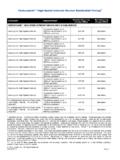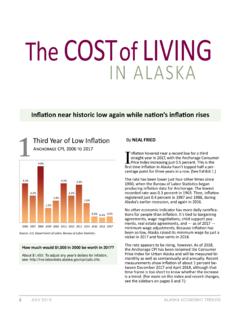Transcription of FIRST-HAND ACCOUNTS OF REFUGEES FLEEING EL …
1 A Study Conducted by the United Nations high Commissioner for RefugeesFIRST-HAND ACCOUNTS OF REFUGEES FLEEING el salvador , guatemala , honduras , AND MEXICOT oday the world is witness to a global refugee crisis of proportions not seen since World War II. But while most of the international media attention is on the REFUGEES arriving in Europe from countries such as Syria, Iraq, and Afghanistan there is another protection crisis unfolding in Central of thousands of women travelling alone or together with their children or other family members are FLEEING a surging tide of violence in el salvador , honduras , guatemala , and parts of mexico . This report brings their often terrifying stories to life and explains why these women have been forced to flee their more than 160 women interviewed for this report talked about being raped, assaulted, extorted, and threatened by members of heavily-armed, transnational criminal groups.
2 They spoke about their families having to contend with gunfights, disappearances, and death threats. They described seeing family members murdered or abducted and watching their children being forcibly recruited by those groups. With authorities often unable to curb the violence and provide redress, many vulnerable women are left with no choice but to run for their is an ordeal in its own right, and for most women, the journey to safety is a journey through hell. After paying exorbitant fees to unscrupulous coyotes, many women are beaten, raped, and too often killed along the way. This is the untold story of many REFUGEES from Central America. Since 2008, UNHCR has recorded a nearly fivefold increase in asylum-seekers arriving to the United States from the Northern Triangle region of el salvador , guatemala , and honduras .
3 Over the same period, we have seen a thirteenfold increase in the number of requests for asylum from within Central America and mexico a staggering indicator of the surging violence shaking the region. This is not the first refugee crisis the Americas region has faced, but it is nevertheless unique in its complexity. Solving it requires a comprehensive regional approach based on cooperation, responsibility-sharing, and solidarity among all countries affected, to ensure that people in need of protection can have access to it. UNHCR stands ready to support governments in this nio GuterresUnited Nations high Commissioner for RefugeesFOREWORD 2015 UNHCRE xecutive Summary and Recommendations 2 Escalating Violence against Women 4No Safety at Home 4 FLEEING to Find Refuge 6 Recommendations 9 Methodology 12I.
4 Reasons Women Fled el salvador , guatemala , honduras , and mexico 15 Direct Harm by Criminal Armed Groups 19 Threats or Attacks after Failure to Pay Extortion Fees 20 Children Recruited and Killed by Criminal Armed Groups 21 Targeted for Suspected or Actual Involvement in Rival Criminal Groups 22 Threats to Police or Government Authorities and Their Family Members 22 Inadequate Protection in Home Countries 23 Severe and Prolonged Domestic Violence 25 Targeted Violence Faced by Transgender Women 27 II. Women as REFUGEES under International Law 33 International Protection of REFUGEES in US Law 34 International Protection and Women 35 Domestic Violence as the Basis for International Protection 35 Protecting Families and Children 36 Particular Concerns for LGBTI People Seeking Refugee Status 36 Political Opinion and Violence against Women 38 Religion, Race, and Refugee Status 38 III.
5 Obstacles Women Reported in Seeking International Protection 41 The Journey North 43 Obstacles to Accessing Asylum in mexico 44 Obstacles to Accessing Asylum in the United States 45 Conclusion 48 Endnotes 50 Acknowledgements 54 UNHCR S Role in Protecting Women 57 TABLE OF CONTENTSFIRST-HAND ACCOUNTS OF REFUGEES FLEEING el salvador , guatemala , honduras , AND MEXICO1 Today, we are confronted with a global refugee crisis of unprecedented levels, a crisis that, as shown in this report, deeply affects the Western Hemisphere.
6 No one knows this better than those FLEEING epidemic levels of violence, including gender-based violence, in el salvador , guatemala , and Research conducted over four months found that women face a startling degree of violence that has a devastating impact on their daily lives. With no protection at home, women flee to protect themselves and their children from murder, extortion, and rape. They present a clear need for international protection. Based on US Department of Homeland Security data covering FY 2015, of the thousands of women and girls from these countries who expressed a fear of being returned to their home country and were subject to the credible fear screening process, US authorities have found that a large percentage have a significant possibility of establishing eligibility for asylum or protection under the Convention against surging tide of violence sweeping across el salvador , guatemala , and honduras forces thousands of women, men, and children to leave their homes every month.
7 This region of Central America, known as the Northern Triangle ( Northern Triangle of Central America or NTCA ), is one of the most dangerous places on region has come under increasing control by sophisticated, organized criminal armed groups, often with transnational reach, driving up rates of murder, gender-based violence, and other forms of serious harm. According to data from the UN Office on Drugs and Crime, honduras ranks first, el salvador fifth, and guatemala sixth for rates of homicide Furthermore, el salvador , guatemala , and honduras rank first, third, and seventh, respectively, for rates of female homicides In large parts of the territory, the violence has surpassed governments abilities to protect victims and provide Certain parts of mexico face similar Over the last few years, there has been a sharp escalation in the number of people FLEEING the NTCA.
8 In 2014, tens of thousands sought asylum in the United States,8 and the number of women crossing the US border was nearly three times higher than in Others have fled to neighboring countries. Combined, mexico , Belize, Costa Rica, Nicaragua, and Panama have seen the number of asylum applications from citizens FLEEING the NTCA grow to nearly 13 times what it was in An alarming feature of this refugee crisis is the number of children FLEEING home, with their mothers or alone. Over 66,000 unaccompanied and separated children11 from the NTCA reached the United States in The number of children EXECUTIVE SUMMARYWOMEN ON THE RUN2 BACKGROUND AND OVERVIEW traveling with their mothers is comparable: recent US Government statistics show that over 66,000 families arrived to the United States in fiscal year Since 2014, countries of asylum have exerted significant efforts to intensify border control measures with a view to containing this phenomenon.
9 However, at the end of August 2015, the United States Government recorded more unaccompanied children arriving to the United States than in the same month in 2014, and the number of family arrivals at the close of financial year 2015 is the second largest on This report provides FIRST-HAND ACCOUNTS of the severity of the protection crisis in the NTCA and mexico . The United Nations high Commissioner for REFUGEES (UNHCR) interviewed 160 women from these countries in the US from June to August 2015. Though these women do not represent a statistical sample of REFUGEES from this region, they have all been either recognized as REFUGEES or have been screened by the US Government to have a credible or reasonable fear of persecution or SUMMARYFIRST-HAND ACCOUNTS OF REFUGEES FLEEING el salvador , guatemala , honduras , AND MEXICO3 Escalating Violence against WomenWomen interviewed for this report indicated that they and their children face extreme levels of violence on a near-daily basis.
10 They described being raped, assaulted, extorted, and threatened by members of criminal armed groups, including gangs and drug cartels. Eighty-five per cent of the women described living in neighborhoods under the control of maras (criminal armed groups prevalent in the NTCA) or other transnational or local criminal per cent of the women described being the targets of direct threats and attacks by members of criminal armed groups as at least one of the primary reasons for their flight. Women also described incidents in which gang members murdered or were responsible for the forced disappearance of a loved one ( a child, partner, or other close relative). Many were asked to pay a cuota, or tax, for living or commuting to work in a certain area, and threatened with physical harm if they could not emphasized that the presence of criminal armed groups in their neighborhoods had a deep impact on their daily lives.
















